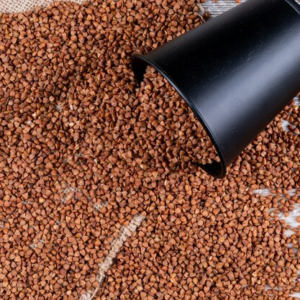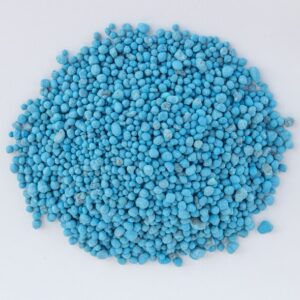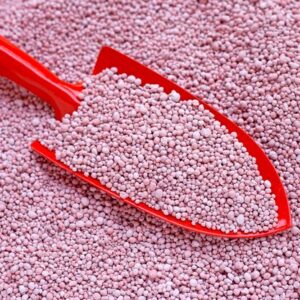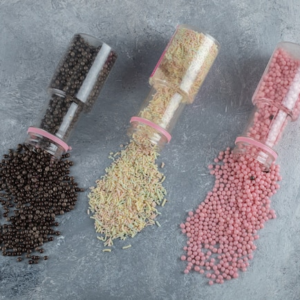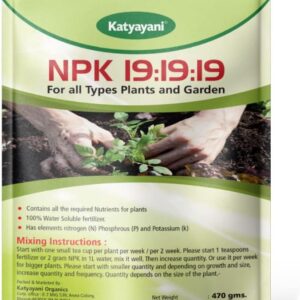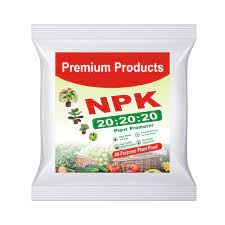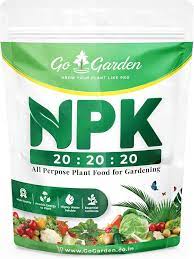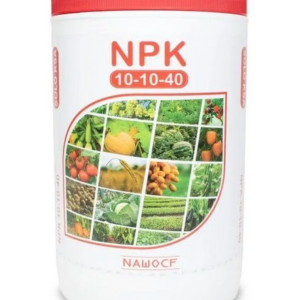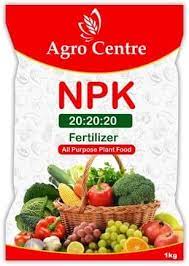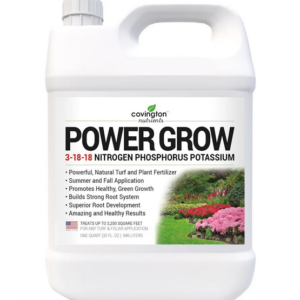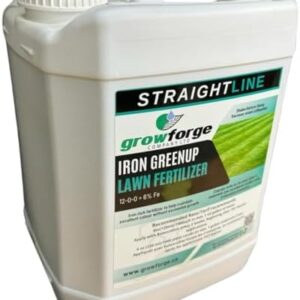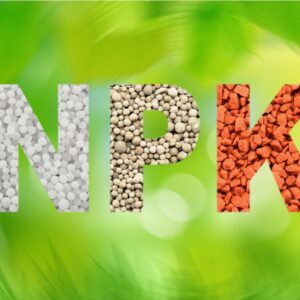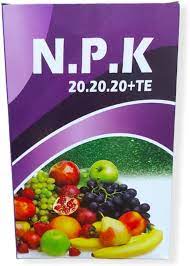NPK Fertilizer:
The letters “NPK” on a fertilizer label stand for nitrogen, phosphorus, and potassium, the three primary nutrients plants need to grow. The numbers on the label indicate the ratio (by percentage) of nitrogen, phosphorus, and potassium in the fertilizer container.
Clays are processed by mechanical methods, such as crushing, grinding, and screening, however, because clays are used in such a wide range of applications, it is often necessary to use other mechanical and chemical processes, such as drying, calcining, bleaching, blunging, and extruding to prepare the material for use.
Even if you do not see the letters N-P-K, but you see a set of three numbers, for example, 5-10-5, you can correctly assume it stands for 5 percent nitrogen, 10 percent phosphorus, and 5 percent potassium, always in that order. This fertilizer contains 20 percent nutrients; the remaining 80 percent is minor nutrients or fillers. Plants need about 16 nutrients; some they get from the air and water, and others are nutrients like iron, calcium, and chlorine from soil.
How Ratios Work vs. Fertilizer Quantities A smaller quantity of fertilizer with higher ratios can be the same as a larger quantity with lower numbers. For example, a 5-pound bag of 10-20-10 fertilizer has the same nutritional value as 10 pounds of 5-10-5 fertilizer. What Do the Ingredients in NPK Do? All of the three ingredients are essential to plant growth. Here’s a brief look at what each nutrient contributes.
In order to improve the quality of kaolin clay for industry, the discoloring impurities must be removed from the samples by suitable techniques. However, these impurities are finer than the clay minerals, which, in turn, present difficulties in the separation processes. These separations generally include magnetic separation, froth flotation, selective flocculation, and size separation by hydro cyclone, and leaching .
Nitrogen
Nitrogen the first number referenced in an NPK sequence, plays a key role in a plant’s coloring and chlorophyll production, making it an important factor in leaf development. Fertilizers high in nitrogen are often used for grass or other plants where green foliage growth is more important than flowering. At the opposite end of the spectrum, gardeners sometimes encounter the problem of nitrogen depletion—the yellowing of typically green plants often indicates a nitrogen deficiency.
High gradient magnetic separation (HGMS) handles 75% of the world production of white porcelain and paper. A typical plant would have an HGMS with a filter diameter of about 2 m and capacity upto 20 t/hr .
Mostly kaolin used in the paper manufacturing industry where playing a dual role, as filler between the pulp fibers and as a surface coating for a white glossy finish. But natural kaolin has color as mined due to the iron containing micas, tourmaline, pyrite, anatase and rutile present in the material. To remove these impurities, kaolin can be magnetically cleaned with a continuous high gradient magnetic separator to produce highly white material suitable for paper or porcelain. A typical plant would have an HGMS with a filter diameter of about 2 m and capacity up to 20 t/hr.
Phosphorus
The middle number in an NPK series refers to the percentage of phosphorous in the fertilizer product. Phosphorus plays a key role in the growth of roots, blooming, and fruiting, which is why it is an essential nutrient for your plants in the spring. Phosphorus contributes to many fundamental plant processes, such as rooting and seed formation.
High gradient magnetic separation (HGMS) handles 75% of the world production of white porcelain and paper. A typical plant would have an HGMS with a filter diameter of about 2 m and capacity upto 20 t/hr .
Mostly kaolin used in the paper manufacturing industry where playing a dual role, as filler between the pulp fibers and as a surface coating for a white glossy finish. But natural kaolin has color as mined due to the iron containing micas, tourmaline, pyrite, anatase and rutile present in the material. To remove these impurities, kaolin can be magnetically cleaned with a continuous high gradient magnetic separator to produce highly white material suitable for paper or porcelain. A typical plant would have an HGMS with a filter diameter of about 2 m and capacity up to 20 t/hr.
Potassium
The final number in the major ingredients listing gives the percentage of potassium in the product. Potassium contributes to the overall health and vigor of plants. It is known to help strengthen a plant’s ability to resist disease, assist in the movement of water and nutrients in the plant, and can be especially important in areas that experience cold or dry weather.
High gradient magnetic separation (HGMS) handles 75% of the world production of white porcelain and paper. A typical plant would have an HGMS with a filter diameter of about 2 m and capacity upto 20 t/hr .
Mostly kaolin used in the paper manufacturing industry where playing a dual role, as filler between the pulp fibers and as a surface coating for a white glossy finish. But natural kaolin has color as mined due to the iron containing micas, tourmaline, pyrite, anatase and rutile present in the material. To remove these impurities, kaolin can be magnetically cleaned with a continuous high gradient magnetic separator to produce highly white material suitable for paper or porcelain. A typical plant would have an HGMS with a filter diameter of about 2 m and capacity up to 20 t/hr.
Other Ingredients
In addition to the major nutrients that are usually noted on the front label, most fertilizers also include additional ingredients that are listed on a side or back label. This may include other nutrients like calcium, magnesium, iron, micronutrients, and even the percentage of organic matter and fillers. Although the minerals and micronutrients are less critical than the major nutrients, a good fertilizer product will include small amounts of other ingredients as well.
High gradient magnetic separation (HGMS) handles 75% of the world production of white porcelain and paper. A typical plant would have an HGMS with a filter diameter of about 2 m and capacity upto 20 t/hr .
Mostly kaolin used in the paper manufacturing industry where playing a dual role, as filler between the pulp fibers and as a surface coating for a white glossy finish. But natural kaolin has color as mined due to the iron containing micas, tourmaline, pyrite, anatase and rutile present in the material. To remove these impurities, kaolin can be magnetically cleaned with a continuous high gradient magnetic separator to produce highly white material suitable for paper or porcelain. A typical plant would have an HGMS with a filter diameter of about 2 m and capacity up to 20 t/hr.
Types of NPK Fertilizers
Balanced Fertilizers A
fertilizer listed as “10-10-10” is considered a balanced or “complete” fertilizer because its nitrogen, phosphorus, and potassium proportions are equal. Meanwhile, a fertilizer labeled “10-0-10” is an “incomplete fertilizer.” Incomplete Fertilizers An incomplete fertilizer is not necessarily inferior to a complete fertilizer. Identifying the right fertilizer for your needs depends on a variety of circumstances. If your soil already has an excess of one of the three nutrients in NPK, you could be harming some of your plants by adding more of it to the soil—in this case, an incomplete or unbalanced fertilizer may be the right choice. For this reason, it is important to test your soil before applying fertilizer. Otherwise, whenever you add anything to your soil, the effect (whether positive or negative) is left to chance.

